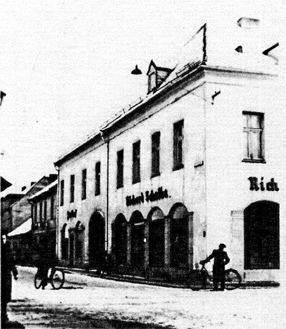
Samuel Siedner and his wife Clara, nee Silberstein, founded in 1875 a hardware store at Ring 20, at the corner to Lublinitzer Straße. This was certainly one of the best locations in town.
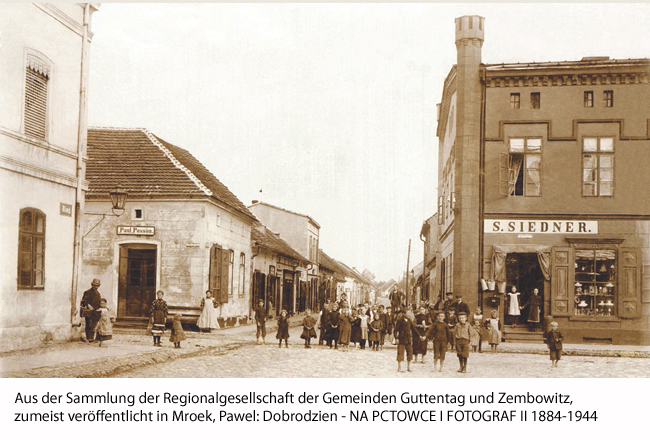
The couple had 4 children: Hugo (*08/20/1876), Adolf (*11/21/1877), Louis (12/22/1878) und Meta (*08/10/1880). These birth dates are mentioned in Claras prayer book therefore they seem to be reliable. But in 3 offical documents for Louis the birth date 12/23/1876 is mentioned, so this birth date is not clear at the moment.
Hugo was married to Sara, nee Karliner. The couple had three children: Ruth (the oldest), Hans (*2/171909) and Guenter (*09/12/1921).
Adolf, a merchant, who was living in Berlin (1931: Fasanenstraße 73) married on November 20, 1920 Irma, nee Zernik (*07/25/1890) had a daughter, Eva (*08/06/1912) and a son, Kurt (*04/10/1915).
Louis Siedner (*12/23/1876) and his wife Hedwig (*5/17/1883, nee Wiener) had two sons: Rudolf (*3/1/1913) and Erich (*4/19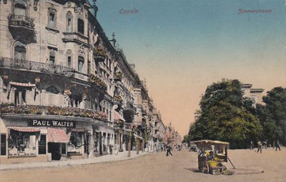 /1915).
/1915).
First Louis was running the shop. Bills shows that the shop "S. Siedner" in Guttentag was owned by the Louis Siedner G.m.b.H.. But in 1921 Louis and his family moved to Oppeln and opened a new hardware store in Zimmerstr. 17.
Read here a testimony of Rudolf about the shop in Oppeln.
In 1923 Hugo returned to Guttentag and overtook the family business. Bills shows that the new owner was the Hugo Siedner G.m.b.H. Hugo was running the shop by the support of his wife and his sister Meta (*08/10/.1880). Louis was still the landlord of the property in Guttentag.
Here you find the bills.
Hans, Hugos son, visited the Gymnasium in Laurahütte for 8 years (Untertertia). In 1923 he started an apprenticeship in the company of his father and finished it in 1926. But he stayed another year in his farthers shop. Then he changed and became a logistic manager at the company "Eugen Weissman" in Beuten, which was a grocery for sewerage- and water-pipline-items. In 1930 he became selfemployed as a travelling sales-man. He sold cutlery of the brand "Solinger", covers and fabrics. He kept a storage-room and employed sub-sales-agents. In his new job he could increase his earnings a lot. As logistic-manager for Eugen Weissman he had earned 185 RM a month, in his new company he had an average return of 650 RM a month.
In 1932 he married Kaethe, nee Hecht. With her he was living in a very well reputed neighbourhood (Bismarckstreet 3, Beuthen). They went on holiday both in sommer and in winter, had a car and had a maid. Because Hans earned enough, his wife quit his job cashier in a bank.
Read here the testimoney of Hans about his CV and here other testimoney about his standard of living.
Resource: Wiedergutmachungsakte Amt für Wiedergutmachung in Saarburg.
In Oppeln, in 1933 Rudolf was granted his Matriculation Examinations at the public Oberrealschule in Oppeln. This was the same school also Lothar Eisner attended. His plan to study at an art academy was foiled by Hitlers coming into power. Instead, for some time he attended Reimann-School, a private school for arts and applied arts in Berlin-Schönhausen. But even at this school he couldn't receive a full-fledged education since beeing a Jew he was not allowed to undergo an apprenticeship or do any pracitcal work.
On 09/14/1934 Eva became mother of a daughter, Anneliese (Amilie). The father is Evas husband Louis Jacobi (*06/12/1895), whom she had married on August 3, 1933.
In Guttentag died Hugo in 1936 by a heart-attack. Sara overtook the shop. At that time the company employed a stuff of 60 person (shop-assistents, storage-manager and office-adminstrators). The Siedners had exclusive-sales-rights for serveral companies, e.g. for weapons and ammonition of the brand "Gustav Genschow", for carpenter tools of the brand "August Schmidt", for preserving jars of the brand "Weck", bicycles of the brand "Opel" and ironmongery and household-goods of the brands "Bartosik" and "Jakob Ravenna". Siedners were a enquiry office for the solvency check company Schimmelpfenning. The company also had a flourishing buisniness by selling construction-iron. Witnesses estimated the turnover between 300,000 and 400,000 RM and a return betwee 50,000 and 60,000 RM.
The family lived in a big flat in the upper floors which was fitted with modern and expensive furniture.
In the same year Hugo died, at April 13, Hans and Käthe became parents of a daughter, Helga. And Ruth married Samson Yakobowitz. Soon the couple became parents of a daughter, Cilly (* 1936 or 1937).
 On July 11, 1937 Rudolf, his brother Erich and his wife Ellinor, whom he had married only a few days before, managed to flee to Palestine. To get visas for Palestine each brother had to pay 26,292 RM to the Palästina-Treuhandstelle G.m.b.H (Palestine Trust-Office) which transfered the money to the Nir-comany in Palestine. Shortly before the departure it became clear, that each brother had to pay also more than 5,000 RM as Reichsfluchtsteuer (capital flight tax). Even though Louis Siedner was wealthy it proofed to be difficult to organize more than 10,000 RM at such a short notice, but he finally manage to raise the money.
On July 11, 1937 Rudolf, his brother Erich and his wife Ellinor, whom he had married only a few days before, managed to flee to Palestine. To get visas for Palestine each brother had to pay 26,292 RM to the Palästina-Treuhandstelle G.m.b.H (Palestine Trust-Office) which transfered the money to the Nir-comany in Palestine. Shortly before the departure it became clear, that each brother had to pay also more than 5,000 RM as Reichsfluchtsteuer (capital flight tax). Even though Louis Siedner was wealthy it proofed to be difficult to organize more than 10,000 RM at such a short notice, but he finally manage to raise the money.
Read here a testimony of Rudolf about his fleeing.
In the same year Eva fled with her family to Amsterdam. At the beginning of 1939 Louis Jacobi founded with his partner W. Grünberg a factory for ladies underwear.
On April 4, 1937 her father and her mother Irma got in Bremen on board of the Lloyd ship "Europa" to New York.
In 1937 the Siedner shop in Guttentag lost the licenz to sell weapons and ammunition. This was a significant business unit. Furthermore, the prosecution had intensified, therefore the business almost broke down completely.
Read here how the lawyer of Hans described the situation and here the testimoney of Mr. Gabor.
Resources: Wiedergutmachungsakte aus dem Amt für Wiedergutmachung in Saarburg.
 In the same year Hans lost his licenz as a sales-man. He had also to handle back his driving licenz. This was the end of his business. He had to move to a cheaper appartment in Bahnhofstraße 23. He was forced to work as day laborer in a pit. For two years he worked for the company "Queitsch & Kübler". For building railwaylines in "Borsigwerk" he earned 4 RM per day. The problems with his back started there.
In the same year Hans lost his licenz as a sales-man. He had also to handle back his driving licenz. This was the end of his business. He had to move to a cheaper appartment in Bahnhofstraße 23. He was forced to work as day laborer in a pit. For two years he worked for the company "Queitsch & Kübler". For building railwaylines in "Borsigwerk" he earned 4 RM per day. The problems with his back started there.
In Oppeln, on January 6, 1938 Louis Siedner was forced to sell his company to Viktor Kulozik at a purchase price of 55,500 RM.
Read here the purchase contract
and
here the announcement of Victor Kulozik, that he overtook the company.
Louis' brother-in-law, Fritz Wiener, later testified, that a competitor had threatened and even hit Louis Siedner to force him to sell his company, but Fritz Wiener was unable to testify with definiteness that the perpetrator was Victor Kulozik. Also Ernst Wolff emphazised that it was a Nazi who bought the company.
Read here the testimoney of Fritz Wiener
and
here the testimony of Ernst Wolff.
On March 1, 1938 Louis and Hedwig had also to leave their flat because Victor Kulozik rented it. The couple moved to Berlin.
Read here a letter, Louis wrote to his children at the beginning of 1938.
 At Reichskristallnacht tear gas and stones were thrown into the building. Presumably the roof structure burnt down and the first floor was severly damaged. The shop, the storage and the flat were ransacked and destroyed. Sara fled head over heels with Günter to Beuthen and never returned. At the next day the broken windows were closed by wooden panels. The shop was closed forever.
At Reichskristallnacht tear gas and stones were thrown into the building. Presumably the roof structure burnt down and the first floor was severly damaged. The shop, the storage and the flat were ransacked and destroyed. Sara fled head over heels with Günter to Beuthen and never returned. At the next day the broken windows were closed by wooden panels. The shop was closed forever.
In the end of 1938 Louis Siedner also had to sell his property in Oppeln to Victor Kulozik for a purchase price of 80,000 RM. Probably at the same time he had also to sell his property in Guttentag.
Kaethe and Helga were arrested but after some days in jail released. Helga, two years old, didn't want to go home because in jail she had children to play and food to eat.
In spring 1939 the mother-in-law of Hans, Emma Hecht, lost her flat and moved into the 2-room-appartment of Hans and his family.
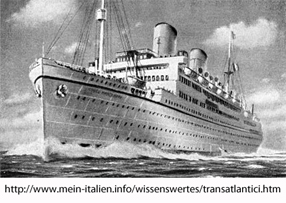 On 07/06/1939 the family and Emma Hecht fled on board of the Conte Biancamano from Genova via Colombo to Shanghai.
On 07/06/1939 the family and Emma Hecht fled on board of the Conte Biancamano from Genova via Colombo to Shanghai.
They received their tickets only three days before the departure of the ship in Genova. Therefore that had not more than 24 hours to do the packin. They took only two suitcases, some blankets and the childbuggy for Helga. The rest they left behind. The cost for the expatriation were 4,638 RM (130 RM for the railway-ticket to Genova, 4,213 RM for the ship-tickets). The JOINT helped to pay the tickets.
Here you can find the ship-tickets.
Resource: Wiedergutmachungsakte Amt für Wiedergutmachung Saarburg.
 In Shanghai the family first were living at Seward Road 803, House 33. Hans tried to work as a plumber. He had a bicycle with two buckets in which he put his tools. Later he also had a ladder. But during the whole periode in Shanghai he couldn't manage to earn enough for the living of his family. He was dependend on the aid of the JOINT wich provided the family with money, cloth and food.
In Shanghai the family first were living at Seward Road 803, House 33. Hans tried to work as a plumber. He had a bicycle with two buckets in which he put his tools. Later he also had a ladder. But during the whole periode in Shanghai he couldn't manage to earn enough for the living of his family. He was dependend on the aid of the JOINT wich provided the family with money, cloth and food.
Here you can find the residence papers of Shanghai
Resource: Wiedergutmachungsakte Amt für Wiedergutmachung Saarburg.
Adolf and Irma had returned from America. The must have travelled between Europe and America several times. Their names were also on the following passenger lists: Irmas name was the list of the Brittanic which started in Southampton and arrived New York on May 8, 1938, and Irma and Adolf were on the passenger list of the ship Volendam from Rotterdam to New York. She ship arrived in New York on December 30, 1939. They named K Siedner as a contact in the US. Maybe this is Kurt Siedner, born in 1916 in Berlin-Charlottenburg, maybe a son. He immigrated to the US on October 31, 1935. He arrived New York on board of the ship "Manhatten" which had started in Hamburg.
Since 1941 the Siedners were living as subtenants in the flat of Betty Stein, who was also Jewish, in Spichern Str. 3 in Berlin. On October 1, 1942 all assest of Louis Siedner were confiscated.
Read here the notification regarding the confication of all assets.
On 06/15/1942 Ruth and her family were deported to Auschwitz. One week later, on 06/23/1942 the same happened to Guenter and Sara, who had been living in the same flat with Ruth and her family on Ring 9/10.
Here you can find the deportation list of 06/15/1942 and
here the list of 06/23/1942.
On September 9, 1942 Hedwig Siedner wrote a goodby-letter to her sons in Palestine:

When Hedwig was talking about the grandmother, she meant her mother Klara Wiener, nee Apt (*08/14/1853). On July 3, 1942 she was deported from Berlin to Theresienstadt and died there two month later on September 5, 1942.
On January 10, 1943 Louis Siedner had to disclose his assets for a last time.
Read here the disclosure statement.
Two days later, on January 12, 1943 Louis Siedner and his wife were deported to Auschwitz.
Here you can find the deportation list.
In Shanghai at 05/15/1943 the neighbourhood Hongkew was established as a Ghetto. Hans and his family had to move there and Hans couldn’t work for Chinese any longer. They moved to Tongchan Road 78.
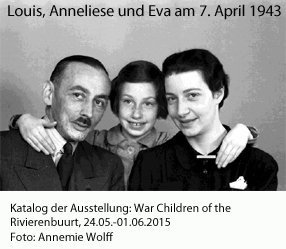 Eva and her family had immigration papers for the USA but they didn't use them. Louis' parents had fled to his son and they couldn't get visas. Louis didn' t want to leave them alone. But in early 1943 the parents of Louis were deported and died some weeks later in Sobibor. In June 1943 also Eva and her family were deported, first to Westerbork and on February 1, 1944 from there to Bergen-Belsen. They were accomomdated in the so called "Sternlager", a part of the camp with potential exchange detainees.
Eva and her family had immigration papers for the USA but they didn't use them. Louis' parents had fled to his son and they couldn't get visas. Louis didn' t want to leave them alone. But in early 1943 the parents of Louis were deported and died some weeks later in Sobibor. In June 1943 also Eva and her family were deported, first to Westerbork and on February 1, 1944 from there to Bergen-Belsen. They were accomomdated in the so called "Sternlager", a part of the camp with potential exchange detainees.
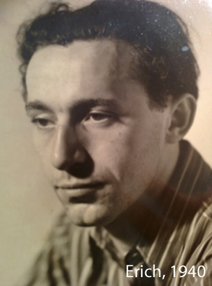 Erich, an architect, had already died on January 21, 1944. At that time he was living in Bne Brak (Palestine).
Erich, an architect, had already died on January 21, 1944. At that time he was living in Bne Brak (Palestine).
Having arrived in Palestine Rudolf couldn't work because of his professional education was not completed. He continued his education by selfstudy and finally could find a job in 1942 at the advertising company Dr. Menchner-Wallison for which he worked until 1947 when the company went bankrupt. Until 1951 he was working for Mr. Wallison, just interuppted by his military service from May 2, 1948 to June 19, 1949. Since the beginning of 1951 he was working as a freelancer.
Read here a testimony of Rudolf about his life.
On April 11, 1945 Eva and her family got on a transport who later became famous as "lost train". With the direction "Theresienstadt" the train was straying through Germany until on April 23, 1945 the Russian armee finally freed the detainees. 198 people had already died because of the terrible hygien cercumstances and the train was was bombed. The soldiers rescued totally exhausted people, some infected by epidemic typhus. In the train the soldiers established a poor hospital but in the next weeks another 320 people died. Eva and her family survived. In June the Americans came and brought them to Leipzig. From there they started back to the Netherlands, which they arrived in August 1945. At the station they got 10 Gulden to survive the first days. By a carriage they were brought to a reception camp.
 Read here, what Anneliese is writting about the time between 1937 and 1945 and
Read here, what Anneliese is writting about the time between 1937 and 1945 and
here a publication about a picture of Anneliese and her parents taken in 1943.
Later Louis became for 17 years Louis the president of LJG A'dam (Liberal Jewish Community of Amsterdam). Louis died on 10/29/1966, Eva on 08/19/2005.
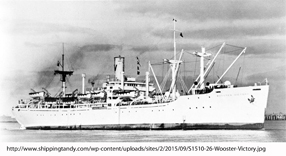 At July 17, 1945 Hans and his family had to move to another appartment because a bomb destroyed there flat. They movet to Chusan Road 169, which was also in the Ghetto. They stayed there even when the Ghetto was freed. The family couldn't leave Shanghai before 1949. At January 01, 1949 the family went on board of the ship "Wooster Vicory" to Naples (Florida). From there the family emigrated to Israel were the arrived on February 14, 1949.
At July 17, 1945 Hans and his family had to move to another appartment because a bomb destroyed there flat. They movet to Chusan Road 169, which was also in the Ghetto. They stayed there even when the Ghetto was freed. The family couldn't leave Shanghai before 1949. At January 01, 1949 the family went on board of the ship "Wooster Vicory" to Naples (Florida). From there the family emigrated to Israel were the arrived on February 14, 1949.
But Hans and Kaethe never felt at home in Israel. The didn't learn Hebrew and the labour market was very hard. Hans had to work as a technical worker in a military camp, as a watchman at a car-company and as a plumber in the textil-factory "Argaman". He earned not more than 450 to 480 JL per anno. The situation was even worth due to the bad physical condition of Hans. Due to the heart work in the mine and the living in tropical conditons in Shanghai he had to wear a corsett and had problems with his eyes. Often he had to stay in bed. He had a handicap of 50 %.
Read here an opinion about his physical situation.
Resource
: Wiedergutmachungsakte Amt für Wiedergutmachung Saarburg.
His wife worked as a cook but she couldn't earn enough for the living of the whole family. Finally Hans and Käthe went back to Germany whereas Helga stayed in Israel. Already in 1958 Hans became a naturalised citizen of Germany and on June 2, 1961 they arrived in Frankfurt.
Here you can find the naturalization certificate and the registration in Frankfurt.
Resource: Wiedergutmachungsakte Amt für Wiedergutmachung Saarburg.
There the government helped to find a flat and a job in Frankfurt. Hans could even work in his trained profession, he sold building materials. Already two weeks after his arrival Hans started to work as a shop-assistent for the Marburg & Söhne. His salary was 550 RM. They were living at Baseler Platz 7.
Here you can find the letter of employment.
Resource: Wiedergutmachungsakte Amt für Wiedergutmachung Saarburg.
In 1953, still in Israel, he had already filed for restitution for himself and as heir of this mother Sara and his brother Günter.
The restituion was given respectively not given as follows.
Hans died on November 15, 1974 in Frankfurt, his wife in November 1981, also in Frankfurt.
Here you can find the emigration-list from Shanghai.
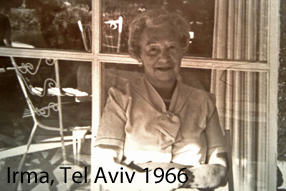 Adolf and Irma were repeatedly in Europe probably they visited her daughter in Amsterdam. There they got on board of ships to New York in 1950 and 1953. Adolf probably died on 05/29/1959. He had lived in 105 Pinehurst Ave in New York, Irma in December, 1976.
Adolf and Irma were repeatedly in Europe probably they visited her daughter in Amsterdam. There they got on board of ships to New York in 1950 and 1953. Adolf probably died on 05/29/1959. He had lived in 105 Pinehurst Ave in New York, Irma in December, 1976.
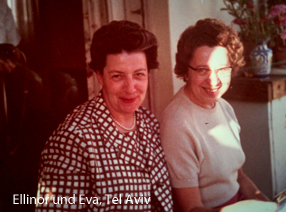 Rudolf died on March 28, 1982, his wife Ellinor on July 30, 1988. The couple had a son, Gad.
Rudolf died on March 28, 1982, his wife Ellinor on July 30, 1988. The couple had a son, Gad.
 Helga and Gad are living (2016) in Israel.
Helga and Gad are living (2016) in Israel.
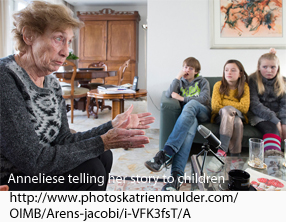 Anneliese is living (2016) in the Netherlands.
Anneliese is living (2016) in the Netherlands.
Arisanisation and restitution of the building in Guttentag
My grand-uncle Richard Schatka purchased the building and built it up again. He built a new roof structure and repaired the first floor. Furthermore he modernised the basement and built or modernized some annexes. After the restoration he was running a well-known draper's shop with a tailor's workroom.

How and when he purchased the building is disputed. The story Richard Schatka told tin his restitution process is incredible. So he told that he purchased the building already in 1937 for a price of 44,000 RM. Further he stated that Louis Siedner had run down the building totally and therefore he had to renovate it for 55,000 RM. The question if he purchased one of the asset he was filing for restitution from a politically persecuded person he answered clearly with: "No."
Read here an excerpt of the application for restitution of Richard Schatka.
But even one witness can't say for certain that the building was destroyed at Reichskristallnacht and another withness, Josef Pallus, stated that it was before 1937 we know quite certain that the building burnt in Reichskristallnacht because other witnesses could testify that for sure. Therefore it is not probably that the purchase took place already in 1937. If this had been the case and the building had been for more than a year in the ownership of a "Arier" and not of the Jew Siedner it wouldn't have made any sense to burn the building down in Reichskristallnacht.
Richard Schatka named the lawyer Dr. Lissek as a witness. Dr. Lissek was the lawyer of Louis Siedner and later lived and worked in Fulda (West-Germany). He "purchased" the former Jewish orphanage. He testified that 1937 was the year of the deal but under the limitation "as far as I know".
Read here the testimony of Mr. Lissek.
Also Arthur Kuschner, former building contractor and head of the building department and now member of the Heimatauskunftstelle (homeland information office, institution in the restitution process), and Wilhelm Schirmer, former office manager of the district administrator) and deputy district administrator and now also member of the Heimatauskunftsstelle testified the the purchase took place in 1937.
Read here the testimony Arthur Kuschner and
here the testimony of Wilhelm Schirmer.
In the testimoney of Wilhelm Schirmer it is also interesting that he testified a turnover between 11,000 RM and 12,000 RM for the years between 1937 and 1939. On the picture above one can see clearly that the building is still under construction. But the picture can't be taken before 1939 because the synagogue is already demolished.
Another clue that the building was sold after Reichskristallnacht is that only the building was sold but not the company "S. Siedner". When there was no company left to sell, this was after Reichskristallnacht.
Because it is certain that the building burnt in Reichskristallnacht at least the stated reason for the renovation one can relegate to the realm of pure fantasy.
Richard Schatka presented more, important witnesses. Some of them I already know from files of other restitution claims, e.g. the former deputy district administrator Wilhelm Schirmer. In all other cases I know he testified only that he got to know the person as trustworthy and therefore probably everything the person stated it true, but in this case he testified more. Based on the testimony of Mr. Kuschner he said that the purchase took place in 1937 and that the building was run down, even dilapidated.
Read here the testimony of Mr. Schirmer.
Furthermore Richard Schatka presentet the former Director of the local savings bank Josef. Pallus. He testified that the purchase took place and that the purchase price of 44,000 RM is plausible. But he also admitted that the market value was higher.
Read here the testimony of Mr. Pallus.
In summary one must say, that the restitution files gives almost no information about what took place. In fact, we know that it was definitely not like it was told in the file. One can say that there was an old boys network still working long after the war. And one can say that the requesters for restitution lied to their own advantage and that the others made testimonies which gave a certain impression but any testimoney was clear enough that the witness could be accused and convicted of a wrong testimony.
It is probably that in this case especially the date of purchase should be hided. Therefore probably also the real reason for the renovation was clouded. If Richard Schatka said that he had to renovate the building because it burnt down in Reichskristallnacht the restitution authorities probably would have questioned the early date of the purchase in 1937 - like me.
This date was so important because deals in 1937 were "normal" deals and most probably the purchase price was paid directly to the Jewish vendor. Because so many witnesses testified the purchase date in 1937 it was very easy for Richard Schatka to get his restitution. He got it already at the beginning of the 60ties.
In the mid 60ties the witnesses Wilhelm Schirmer and Josef Pallus were asked anew, this time because Hans filed in the name of his mother Sara for restitution for the lost of her company.
Read here the testimoney of Josef Pallus und here the testimoney of Wilhelm Schirmer.
Resource: Wiedergutmachungsakte des Amtes für Wiedergutmachung in Saarburg
Both, Pallus and Schirmer, confirmed that the building was purchased in 1937, but both testimonies are not credible.
The testimoney of Josef Pallus, not more than half a page long, contains so many mistakes that it is not probably that in particular the testimoney regarding the date of the purchase is correct:
These many mistakes, stated at only half a page, show that Josef Pallus did not have a close relationship to the Siedner family. Therefore his testimoney is worthless. If one wants to draw any conclusion from this testimoney, than it is significantly different from the one Pallus wanted to be drawn:
Also the testimoney of Wilhelm Schirmer is not credible. He stated in his second testimoney that even the Siedner shop was run further until Reichskristallnacht, the purchase of the building had taken place in 1937. He argued that Richard Schatka first had to organize the financing for the modernisation.
These is not credible:
All this he testified only after the autorities had found out that the building and shop was owned by Jews and both were destroyed at Reichskristallnacht. This makes the testimoney incredible.
Both testimoney of Wilhelm Schirmer are not consistent, in some parts unplausible and both testimoney are lacking explanations. The testimoney of 1964 that it is nevertheless correct that the purchase took place in 1937, has to be valued as defensive lie, to cover that he had made a false testimoney in 1953.
In the late 70ties Rudolf Siedner also filed for restitution. But he could only state next to nothing about the property in Guttentag. The Lastenausgleichsamt (office for restitution) took all information from the already closed restitution procedure of Richard Schatka. The Lastenausgleichsamt disputably held that in this procedure it would have been proved that the purchase price was transfered to Louis Siedner to his free disposal. Moreover, the substituted standard value of 38,200 RM was taken from the file of Richard Schatka.
Read here the statement for the restituion of Rudolf Siedner regarding the property in Guttentag.
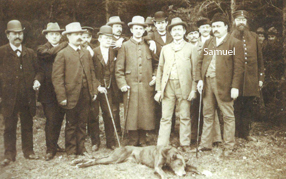
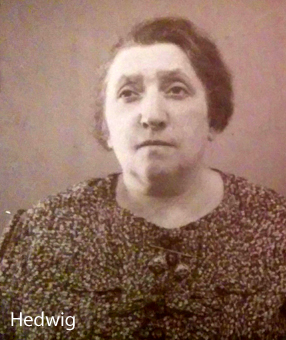
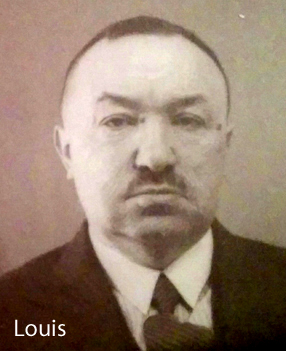
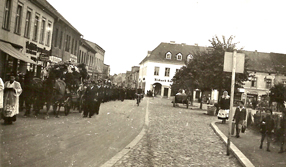 Saniertes Gebäude Richard Schatka nach 1940
Saniertes Gebäude Richard Schatka nach 1940

